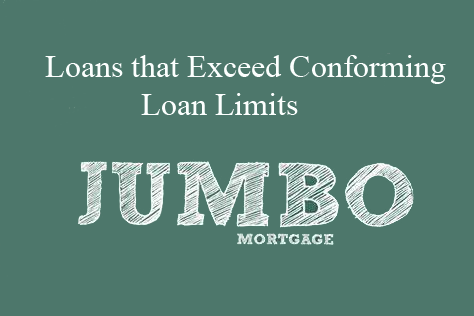Shares|ShareTweet “Show Me the Money!” – How Rural America is Luring City Slickers with Cold, Hard Cash Relocation Incentives Reshaping America’s Rural Landscape in the Face of Rising Costs Remember when your grandma used to slip you a $20 bill and tell you to buy something nice? Well, imagine if entire states and cities started doing that, but with way more zeros. That’s exactly what’s happening across rural America right now, and it’s causing quite a stir and relocation incentives are calling all that buzz with curious and adventure seekers. From the rolling hills of West Virginia to the wide-open…
Types of Mortgages: Exploring the Options Available in the Market

When it comes to buying a home, getting a mortgage is a crucial part of the process. But with so many different types of mortgages available in the market, it can be overwhelming to choose the right one for your financial situation and goals. In this article, we’ll explore the various types of mortgages available in the market, backed by expert opinions, studies, and data to provide you with more depth and credibility.
1. Fixed-Rate Mortgages
Fixed-rate mortgages are the most popular type of mortgage among homebuyers. According to a report by the Mortgage Bankers Association, fixed-rate mortgages accounted for 93% of all mortgages issued in the first quarter of 2021. With a fixed-rate mortgage, the interest rate remains the same throughout the life of the loan, making it easier for borrowers to plan and budget for their monthly payments.
However, fixed-rate mortgages may not be the best option for everyone. According to a study by the Consumer Financial Protection Bureau, borrowers who plan to move or refinance within a few years of buying their home may benefit more from an adjustable-rate mortgage (ARM).
2. Adjustable-Rate Mortgages
An adjustable-rate mortgage (ARM) is a type of mortgage where the interest rate fluctuates over time, based on changes in the market. ARMs usually offer a lower interest rate than fixed-rate mortgages in the initial years of the loan, making them a good option for borrowers who plan to move or refinance within a few years of buying their home.
However, ARMs come with some risks. According to a study by the Federal Reserve, during periods of rising interest rates, borrowers with ARMs may see their monthly payments increase significantly, leading to financial stress.
3. Government-Backed Mortgages
Government-backed mortgages, such as FHA loans, VA loans, and USDA loans, are mortgages that are insured or guaranteed by the federal government. These mortgages usually have more relaxed credit and income requirements than conventional mortgages, making them a good option for borrowers who may not qualify for a conventional mortgage.
According to a report by the Urban Institute, government-backed mortgages accounted for nearly 40% of all mortgages issued in 2019. However, these mortgages may come with some downsides, such as higher mortgage insurance premiums and fees.
4. Jumbo Mortgages
A jumbo mortgage is a type of mortgage that is used to finance homes that exceed the conforming loan limits set by Fannie Mae and Freddie Mac. According to a report by the Mortgage Bankers Association, jumbo mortgages accounted for 5.6% of all mortgages issued in the first quarter of 2021.
Jumbo mortgages usually have higher interest rates than conventional mortgages, making them a more expensive option for borrowers. However, according to a study by the National Bureau of Economic Research, jumbo mortgages may also offer some benefits, such as lower default rates.
5. Interest-Only Mortgages
Interest-only mortgages are a type of mortgage where the borrower only pays the interest on the loan for a set period, usually five or ten years, before starting to pay the principal. According to a report by the Mortgage Bankers Association, interest-only mortgages accounted for less than 1% of all mortgages issued in the first quarter of 2021.
Interest-only mortgages can be risky because, once the interest-only period ends, the borrower must start paying the principal as well, which can result in higher monthly payments. According to a study by the Consumer Financial Protection Bureau, interest-only mortgages were associated with higher default rates during the housing crisis of 2008.
6. USDA loans
USDA loans are a type of government-backed mortgage that is available to homebuyers in rural areas. With a USDA loan, you may be able to buy a home with no down payment, and you can often qualify for a lower interest rate than with a conventional loan.
According to a study by the National Association of Realtors, USDA loans accounted for around 1% of all mortgages in 2020.
7. Balloon Mortgages
A balloon mortgage is a type of mortgage in which the borrower makes small payments for a certain period, after which the remaining balance is due in a large lump sum. Balloon mortgages are not as common as they once were, as they can be risky for borrowers who are not able to pay the large lump sum at the end of the loan term.
8. Second Mortgages
A second mortgage is a type of mortgage that is taken out on a property that already has a first mortgage. Second mortgages typically have higher interest rates than first mortgages and can be risky for borrowers if they are unable to make payments on both loans.
9. Reverse Mortgages
A reverse mortgage is a type of mortgage that is available to homeowners who are 62 years of age or older. With a reverse mortgage, the borrower receives payments from the lender based on the equity in their home. According to a report by the National Reverse Mortgage Lenders Association, reverse mortgages have become increasingly popular among older Americans in recent years. The report found that in 2019, the total outstanding balance of reverse mortgages in the United States was $10.2 billion. Additionally, the report noted that many seniors use reverse mortgages to pay off existing mortgage debt or other debts, while others use them to supplement their retirement income or pay for long-term care expenses. However, it’s important to note that reverse mortgages also come with risks and drawbacks, such as high fees and interest rates, which can significantly impact the equity and inheritance of the borrower’s heirs. It’s crucial for potential borrowers to thoroughly understand the terms and risks associated with a reverse mortgage before making a decision.
A wrap-around mortgage, also known as an all-inclusive mortgage, involves a buyer taking out a second mortgage to cover the difference between their down payment and the full mortgage amount. The seller then takes the payments from the first mortgage and applies them to the second mortgage, essentially “wrapping” the two mortgages into one.
This type of mortgage can be advantageous for both the buyer and the seller. The buyer can obtain financing without having to qualify for a traditional mortgage, and the seller can receive a higher interest rate on the second mortgage.
11. Graduated Payment Mortgages
A graduated payment mortgage (GPM) is a type of mortgage that starts with lower payments that gradually increase over time. The idea is that borrowers will start off with smaller payments when their income is lower, and as they progress in their careers and earn more money, their payments will increase to keep up with their higher income.
This type of mortgage can be helpful for borrowers who expect to see significant increases in their income over the life of the loan. However, it’s important to note that the payments will increase significantly over time, so borrowers should be prepared for the additional expense.
12. Bi-Weekly Mortgages
A bi-weekly mortgage is a mortgage that is paid off every two weeks instead of once a month. By making half of the monthly payment every two weeks, borrowers end up making the equivalent of 13 monthly payments per year, which can help them pay off their mortgage faster and save on interest.
While bi-weekly mortgages can be advantageous for borrowers who want to pay off their mortgage faster, it’s important to make sure that there are no prepayment penalties and that the lender is properly applying the extra payments to the principal.
10. Bridge Loans
A bridge loan is a short-term loan that is used to bridge the gap between the purchase of a new property and the sale of an existing property. These loans are often used in real estate transactions where the borrower needs to come up with a down payment for a new property before they have sold their existing property.
Bridge loans can be helpful for borrowers who need to move quickly on a new property but don’t have the funds available to make a down payment. However, they often come with higher interest rates and fees, so borrowers should make sure that they will be able to pay off the loan quickly.
Conclusion
When it comes to mortgages, there are many different types to choose from. Each type has its own advantages and disadvantages, and it’s important to choose the one that best fits your financial situation and goals.
Whether you’re a first-time homebuyer or a seasoned investor, understanding the different types of mortgages can help you make informed decisions about your finances and your future.
FAQs
What is a fixed-rate mortgage?
A fixed-rate mortgage is a type of mortgage where the interest rate remains the same for the entire term of the loan.
What is an adjustable-rate mortgage?
An adjustable-rate mortgage is a type of mortgage where the interest rate can fluctuate over the life of the loan.
What is a VA loan?
A VA loan is a type of mortgage that is guaranteed by the Department of Veterans Affairs and is available to eligible veterans and their spouses.
What is a jumbo mortgage?
A jumbo mortgage is a type of mortgage that exceeds the maximum loan amount set by Fannie Mae and Freddie Mac.
What is a wrap-around mortgage?
A wrap-around mortgage is a type of mortgage where a buyer takes out a second mortgage to cover the difference between their down payment and the full mortgage amount. The seller then takes the payments from the first mortgage and applies them to the second mortgage.
Sources:
- Consumer Financial Protection Bureau. “Mortgage Closing: The Role of the Closing Disclosure.” https://www.consumerfinance.gov/data-research/research-reports
- https://moneyparade.com/mortgage-calculator/











Pingback: The Mortgage Application Process: A Comprehensive Guide
Pingback: Mortgage Rates: Factors that Affect Mortgage Rates, How to Compare Rates, and Tips for Getting the Best Mortgage Rate